Nikkei 225 Brokers for 2026
We found 11 online brokers that are appropriate for Trading Trading Nikkei 225 Index.
Best Trading Nikkei 225 Index Brokers Guide
Analysis by Andrew Blumer, Updated and fact-checked by Senad Karaahmetovic, Last updated – December 03, 2025
Nikkei 225 Brokers
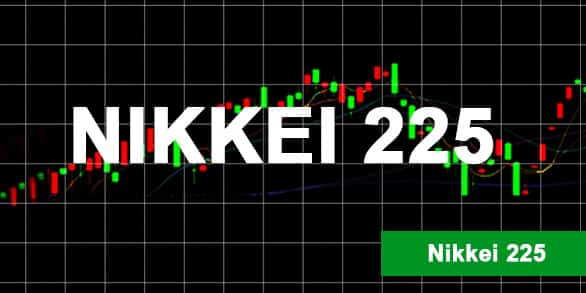
If you're looking to trade Japan’s leading stock index, the Nikkei 225, choosing the right broker is crucial. The index consists of 225 top companies listed on the Tokyo Stock Exchange and reflects Japan’s overall economic strength. Whether you're trading short term volatility say, reacting to Bank of Japan policy tweaks or the hype around high profile events like the recent Chris Eubank Jr vs Conor Benn 2 bout or holding long term positions, factors such as platform quality, execution speed, regulation, support, and funding flexibility all play a role in your success. This guide highlights the best brokers that support Nikkei 225 trading and what makes each one suitable for different trading strategies.
Most brokers featured below provide access to the Nikkei 225 via Contracts for Difference (CFDs), allowing you to speculate on price movements without owning the underlying asset. These brokers offer various tools suitable for scalping capitalizing on intraday swings driven by, for example, corporate earnings surprises swing trading during medium term trends like post fight market shifts after Chris Eubank Jr vs Conor Benn 2, and long term investment strategies based on Japan’s broader economic recovery.
Best Nikkei 225 Brokers
IC Markets
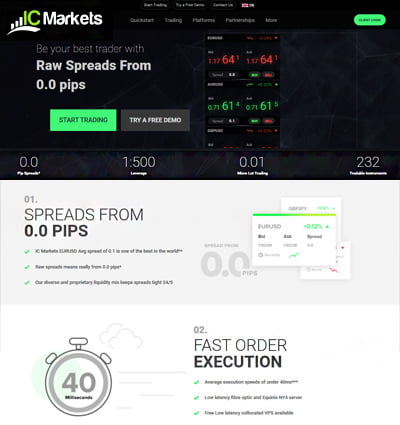
IC Markets offers the Nikkei 225 as a CFD under the symbol JP225, tradable via MT4, MT5, and cTrader platforms with leverage up to 1:500 depending on your region. The broker delivers ultra fast execution averaging 40ms and institutional grade liquidity, ideal for traders using automated systems or high frequency strategies. Its free VPS hosting and tight spreads make it a solid choice for serious index traders.
RoboForex
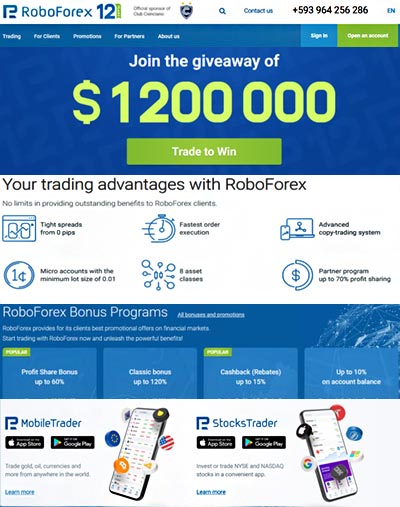
RoboForex supports Nikkei 225 CFD trading with flexible leverage, deep liquidity, and ultra low spreads. Available on MT4 and MT5, it's tailored to traders who want to take advantage of volatility in Asian sessions. RoboForex also offers CopyFX for social trading and supports algorithmic strategies through expert advisors and VPS hosting.
eToro

eToro enables traders to invest in Nikkei 225 ETFs and CFDs, making it accessible to beginners and long term investors. Its standout CopyTrading feature allows users to follow traders who focus on Japanese equities. Regulated by the FCA and CySEC, eToro is ideal for community driven trading and portfolio diversification.
XTB
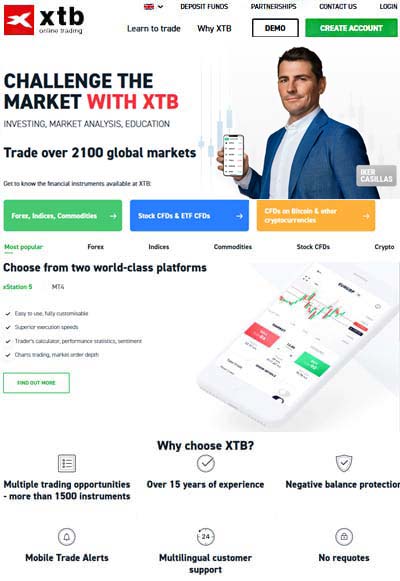
XTB offers the Nikkei 225 as a CFD with competitive spreads and intuitive trading on its proprietary xStation platform. Traders benefit from in depth market insights, daily briefings, and strong educational content. With FCA and CySEC oversight, XTB appeals to those who value both research and security in their index trading.
XM
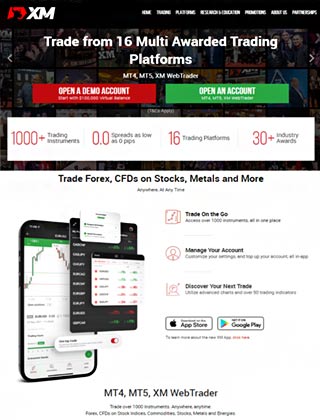
XM provides access to the Nikkei 225 through MT4 and MT5, offering flexible leverage and multiple account types. Their platform is known for excellent customer support and a wide range of educational content, making it well suited for both novice and experienced traders targeting Japanese markets.
Pepperstone
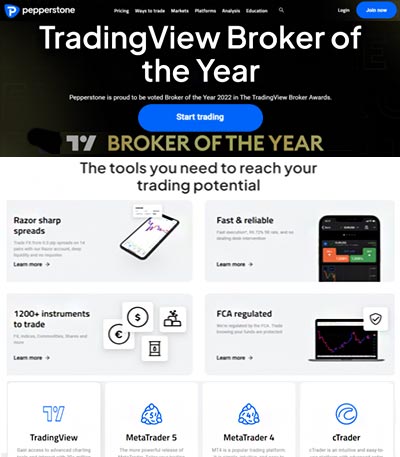
Pepperstone offers access to the Nikkei 225 via CFDs with tight spreads and lightning fast execution on platforms like MT4, MT5, and cTrader. Regulated by the FCA and ASIC, it provides secure access for global traders. The broker’s tools and analysis features make it a strong pick for tactical index trading and short term strategies.
AvaTrade
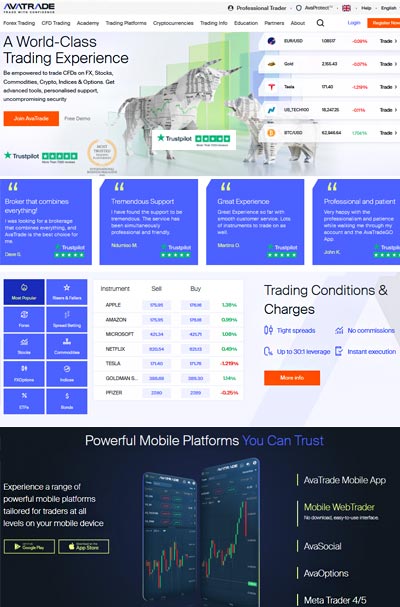
AvaTrade supports Nikkei 225 CFD trading via its AvaTradeGo mobile app and MT4/MT5 platforms. With fixed spreads, flexible funding options, and the AvaSocial platform for copy trading, it’s an accessible solution for mobile first traders. AvaTrade is regulated globally and suitable for those who want a secure and social way to trade indices.
FP Markets
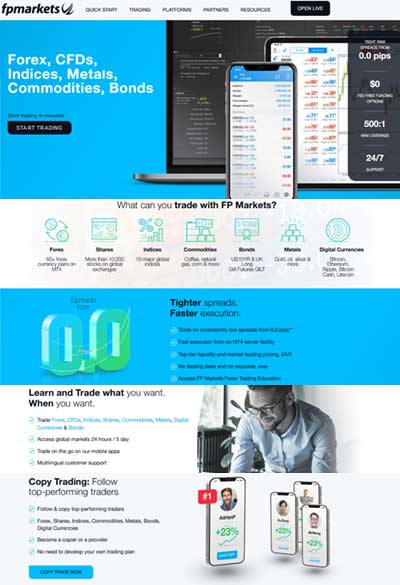
FP Markets offers the Nikkei 225 as a CFD on both MetaTrader 4 and 5 with fast execution and low latency. Known for excellent charting tools, this broker is best suited for traders who require analytical depth. Regulated by ASIC and CySEC, it supports scalping, hedging, and automation.
History of Investing in Japan

The Tokyo Stock Exchange (TSE), established in 1878, began as a venue for trading samurai issued government bonds and gradually added precious metals before listing equities. Over the decades, it evolved into one of the world’s premier markets, underpinning Japan’s rise from the Meiji Restoration through its post war recovery.
In the wake of World War II, the TSE reopened in 1949 under new oversight from the Securities and Exchange Surveillance Commission. The subsequent “Japanese Miracle” of the 1950s–’80s saw the Nikkei 225 surge to all time peaks, only to experience the bubble burst of 1990–’91 and a protracted “Lost Decade.”
Despite setbacks including the global financial crisis of 2008 and volatility during the COVID 19 pandemic the TSE has continuously modernized. Reforms such as the 2013 “Abenomics” monetary easing and the 2022 launch of its Prime Market segment have boosted liquidity. Even cultural phenomena like the hype around high profile events such as Chris Eubank Jr. vs. Conor Benn 2 demonstrate how investor sentiment can swing sharply around major news, impacting trading volumes and market volatility.
About the Nikkei 225 Index
The Nikkei 225, introduced in 1950, remains Japan’s flagship price weighted index, encompassing 225 leading firms on the TSE. It serves as a barometer for both domestic and international investors gauging Japan’s economic trajectory.
As a price weighted benchmark akin to the Dow Jones Industrial Average stocks with higher share prices carry greater influence. Thus, share price movements at companies like Toyota, SoftBank, and Fast Retailing can disproportionately sway the index.
Constituents are reviewed every September to reflect structural shifts from the growth of tech giants like NEC and CyberAgent to the rising prominence of ESG focused businesses. This annual rebalancing ensures the Nikkei remains aligned with Japan’s evolving sectoral landscape.
In recent years the Nikkei 225 has bounced back from pandemic era lows to hit multi decade highs in early 2024 and maintain robust gains through 2025 underscoring its resilience amid global headwinds. For long term investors, it continues to offer broad exposure to Japan’s diverse economy.

Full Nikkei 225 Japanese Company List
- Advantest Corp. (Code: 6857, Sector: Electric Machinery)
- Aeon Co., Ltd. (Code: 8267, Sector: Retail)
- Agc Inc. (Code: 5201, Sector: Glass & Ceramics)
- Ajinomoto Co., Inc. (Code: 2802, Sector: Foods)
- Alps Alpine Co., Ltd. (Code: 6770, Sector: Electric Machinery)
- Amada Co., Ltd. (Code: 6113, Sector: Machinery)
- Ana Holdings Inc. (Code: 9202, Sector: Air Transport)
- Aozora Bank, Ltd. (Code: 8304, Sector: Banking)
- Asahi Group Holdings, Ltd. (Code: 2502, Sector: Foods)
- Asahi Kasei Corp. (Code: 3407, Sector: Chemicals)
- Astellas Pharma Inc. (Code: 4503, Sector: Pharmaceuticals)
- Bandai Namco Holdings Inc. (Code: 7832, Sector: Other Manufacturing)
- Bridgestone Corp. (Code: 5108, Sector: Rubber)
- Canon Inc. (Code: 7751, Sector: Electric Machinery)
- Casio Computer Co., Ltd. (Code: 6952, Sector: Electric Machinery)
- Central Japan Railway Co., Ltd. (Code: 9022, Sector: Railway & Bus)
- Chubu Electric Power Co., Inc. (Code: 9502, Sector: Electric Power)
- Chugai Pharmaceutical Co., Ltd. (Code: 4519, Sector: Pharmaceuticals)
- Citizen Watch Co., Ltd. (Code: 7762, Sector: Precision Instruments)
- Comsys Holdings Corp. (Code: 1721, Sector: Construction)
- Concordia Financial Group, Ltd. (Code: 7186, Sector: Banking)
- Credit Saison Co., Ltd. (Code: 8253, Sector: Other Financial Services)
- Cyberagent, Inc. (Code: 4751, Sector: Services)
- Dai Nippon Printing Co., Ltd. (Code: 7912, Sector: Other Manufacturing)
- Dai Ichi Life Holdings, Inc. (Code: 8750, Sector: Insurance)
- Daiichi Sankyo Co., Ltd. (Code: 4568, Sector: Pharmaceuticals)
- Daikin Industries, Ltd. (Code: 6367, Sector: Machinery)
- Daiwa House Ind. Co., Ltd. (Code: 1925, Sector: Construction)
- Daiwa Securities Group Inc. (Code: 8601, Sector: Securities)
- Dena Co., Ltd. (Code: 2432, Sector: Services)
- Denka Co., Ltd. (Code: 4061, Sector: Chemicals)
- Denso Corp. (Code: 6902, Sector: Electric Machinery)
- Dentsu Group Inc. (Code: 4324, Sector: Services)
- Dic Corp. (Code: 4631, Sector: Chemicals)
- Dowa Holdings Co., Ltd. (Code: 5714, Sector: Nonferrous Metals)
- East Japan Railway Co. (Code: 9020, Sector: Railway & Bus)
- Ebara Corp. (Code: 6361, Sector: Machinery)
- Eisai Co., Ltd. (Code: 4523, Sector: Pharmaceuticals)
- Eneos Holdings, Inc. (Code: 5020, Sector: Petroleum)
- Fanuc Corp. (Code: 6954, Sector: Electric Machinery)
- Fast Retailing Co., Ltd. (Code: 9983, Sector: Retail)
- Fuji Electric Co., Ltd. (Code: 6504, Sector: Electric Machinery)
- Fujifilm Holdings Corp. (Code: 4901, Sector: Chemicals)
- Fujikura Ltd. (Code: 5803, Sector: Nonferrous Metals)
- Fujitsu Ltd. (Code: 6702, Sector: Electric Machinery)
- Fukuoka Financial Group, Inc. (Code: 8354, Sector: Banking)
- Furukawa Electric Co., Ltd. (Code: 5801, Sector: Nonferrous Metals)
- Gs Yuasa Corp. (Code: 6674, Sector: Electric Machinery)
- Haseko Corp. (Code: 1808, Sector: Construction)
- Hino Motors, Ltd. (Code: 7205, Sector: Automobiles & Auto parts)
- Hitachi Const. Mach. Co., Ltd. (Code: 6305, Sector: Machinery)
- Hitachi Zosen Corp. (Code: 7004, Sector: Machinery)
- Hitachi, Ltd. (Code: 6501, Sector: Electric Machinery)
- Honda Motor Co., Ltd. (Code: 7267, Sector: Automobiles & Auto parts)
- Hoya Corp. (Code: 7741, Sector: Precision Instruments)
- Idemitsu Kosan Co., Ltd. (Code: 5019, Sector: Petroleum)
- Ihi Corp. (Code: 7013, Sector: Machinery)
- Inpex Corp. (Code: 1605, Sector: Mining)
- Isetan Mitsukoshi Holdings Ltd. (Code: 3099, Sector: Retail)
- Isuzu Motors Ltd. (Code: 7202, Sector: Automobiles & Auto parts)
- Itochu Corp. (Code: 8001, Sector: Trading Companies)
- J.Front Retailing Co., Ltd. (Code: 3086, Sector: Retail)
- Japan Airlines Co., Ltd. (Code: 9201, Sector: Air Transport)
- Japan Exchange Group, Inc. (Code: 8697, Sector: Other Financial Services)
- Japan Post Holdings Co., Ltd. (Code: 6178, Sector: Services)
- Japan Tobacco Inc. (Code: 2914, Sector: Foods)
- Jfe Holdings, Inc. (Code: 5411, Sector: Steel)
- Jgc Holdings Corp. (Code: 1963, Sector: Construction)
- Jtekt Corp. (Code: 6473, Sector: Machinery)
- Kajima Corp. (Code: 1812, Sector: Construction)
- Kao Corp. (Code: 4452, Sector: Chemicals)
- Kawasaki Heavy Ind., Ltd. (Code: 7012, Sector: Shipbuilding)
- Kawasaki Kisen Kaisha, Ltd. (Code: 9107, Sector: Marine Transport)
- Kddi Corp. (Code: 9433, Sector: Communications)
- Keio Corp. (Code: 9008, Sector: Railway & Bus)
- Keisei Electric Railway Co., Ltd. (Code: 9009, Sector: Railway & Bus)
- Keyence Corp. (Code: 6861, Sector: Electric Machinery)
- Kikkoman Corp. (Code: 2801, Sector: Foods)
- Kirin Holdings Co., Ltd. (Code: 2503, Sector: Foods)
- Kobe Steel, Ltd. (Code: 5406, Sector: Steel)
- Komatsu Ltd. (Code: 6301, Sector: Machinery)
- Konami Group Corp. (Code: 9766, Sector: Services)
- Konica Minolta, Inc. (Code: 4902, Sector: Precision Instruments)
- Kubota Corp. (Code: 6326, Sector: Machinery)
- Kuraray Co., Ltd. (Code: 3405, Sector: Chemicals)
- Kyocera Corp. (Code: 6971, Sector: Electric Machinery)
- Kyowa Kirin Co., Ltd. (Code: 4151, Sector: Pharmaceuticals)
- Lasertec Corp. (Code: 6920, Sector: Electric Machinery)
- Ly Corp. (Code: 4689, Sector: Services)
- M3, Inc. (Code: 2413, Sector: Services)
- Marubeni Corp. (Code: 8002, Sector: Trading Companies)
- Marui Group Co., Ltd. (Code: 8252, Sector: Retail)
- Mazda Motor Corp. (Code: 7261, Sector: Automobiles & Auto parts)
- Meiji Holdings Co., Ltd. (Code: 2269, Sector: Foods)
- Mercari, Inc. (Code: 4385, Sector: Services)
- Minebea Mitsumi Inc. (Code: 6479, Sector: Electric Machinery)
- Mitsubishi Chemical Group Corp. (Code: 4188, Sector: Chemicals)
- Mitsubishi Corp. (Code: 8058, Sector: Trading Companies)
- Mitsubishi Electric Corp. (Code: 6503, Sector: Electric Machinery)
- Mitsubishi Estate Co., Ltd. (Code: 8802, Sector: Real Estate)
- Mitsubishi Heavy Ind., Ltd. (Code: 7011, Sector: Machinery)
- Mitsubishi Logistics Corp. (Code: 9301, Sector: Warehousing)
- Mitsubishi Materials Corp. (Code: 5711, Sector: Nonferrous Metals)
- Mitsubishi Motors Corp. (Code: 7211, Sector: Automobiles & Auto parts)
- Mitsubishi Ufj Financial Group, Inc. (Code: 8306, Sector: Banking)
- Mitsui & Co., Ltd. (Code: 8031, Sector: Trading Companies)
- Mitsui Chemicals, Inc. (Code: 4183, Sector: Chemicals)
- Mitsui Fudosan Co., Ltd. (Code: 8801, Sector: Real Estate)
- Mitsui Mining & Smelting Co. (Code: 5706, Sector: Nonferrous Metals)
- Mitsui O.S.K.Lines, Ltd. (Code: 9104, Sector: Marine Transport)
- Mizuho Financial Group, Inc. (Code: 8411, Sector: Banking)
- Ms&Ad Insurance Group Holdings, Inc. (Code: 8725, Sector: Insurance)
- Murata Manufacturing Co., Ltd. (Code: 6981, Sector: Electric Machinery)
- Nec Corp. (Code: 6701, Sector: Electric Machinery)
- Nexon Co., Ltd. (Code: 3659, Sector: Services)
- Ngk Insulators, Ltd. (Code: 5333, Sector: Glass & Ceramics)
- Nh Foods Ltd. (Code: 2282, Sector: Foods)
- Nichirei Corp. (Code: 2871, Sector: Foods)
- Nidec Corp. (Code: 6594, Sector: Electric Machinery)
- Nikon Corp. (Code: 7731, Sector: Precision Instruments)
- Nintendo Co., Ltd. (Code: 7974, Sector: Services)
- Nippon Electric Glass Co., Ltd. (Code: 5214, Sector: Glass & Ceramics)
- Nippon Express Holdings, Inc. (Code: 9147, Sector: Land Transport)
- Nippon Paper Industries Co., Ltd. (Code: 3863, Sector: Pulp & Paper)
- Nippon Steel Corp. (Code: 5401, Sector: Steel)
- Nippon Telegraph & Telephone Corp. (Code: 9432, Sector: Communications)
- Nippon Yusen K.K. (Code: 9101, Sector: Marine Transport)
- Nissan Chemical Corp. (Code: 4021, Sector: Chemicals)
- Nissan Motor Co., Ltd. (Code: 7201, Sector: Automobiles & Auto parts)
- Nisshin Seifun Group Inc. (Code: 2002, Sector: Foods)
- Nissui Corp. (Code: 1332, Sector: Fishery)
- Nitori Holdings Co., Ltd. (Code: 9843, Sector: Retail)
- Nitto Denko Corp. (Code: 6988, Sector: Chemicals)
- Nomura Holdings, Inc. (Code: 8604, Sector: Securities)
- Nsk Ltd. (Code: 6471, Sector: Machinery)
- Ntn Corp. (Code: 6472, Sector: Machinery)
- Ntt Data Group Corp. (Code: 9613, Sector: Communications)
- Obayashi Corp. (Code: 1802, Sector: Construction)
- Odakyu Electric Railway Co., Ltd. (Code: 9007, Sector: Railway & Bus)
- Oji Holdings Corp. (Code: 3861, Sector: Pulp & Paper)
- Okuma Corp. (Code: 6103, Sector: Machinery)
- Olympus Corp. (Code: 7733, Sector: Precision Instruments)
- Omron Corp. (Code: 6645, Sector: Electric Machinery)
- Oriental Land Co., Ltd. (Code: 4661, Sector: Services)
- Orix Corp. (Code: 8591, Sector: Other Financial Services)
- Osaka Gas Co., Ltd. (Code: 9532, Sector: Gas)
- Otsuka Holdings Co., Ltd. (Code: 4578, Sector: Pharmaceuticals)
- Pacific Metals Co., Ltd. (Code: 5541, Sector: Steel)
- Panasonic Holdings Corp. (Code: 6752, Sector: Electric Machinery)
- Rakuten Group, Inc. (Code: 4755, Sector: Services)
- Recruit Holdings Co., Ltd. (Code: 6098, Sector: Services)
- Renesas Electronics Corp. (Code: 6723, Sector: Electric Machinery)
- Resona Holdings, Inc. (Code: 8308, Sector: Banking)
- Resonac Holdings Corp. (Code: 4004, Sector: Chemicals)
- Ricoh Co., Ltd. (Code: 7752, Sector: Electric Machinery)
- Sapporo Holdings Ltd. (Code: 2501, Sector: Foods)
- Screen Holdings Co., Ltd. (Code: 7735, Sector: Electric Machinery)
- Secom Co., Ltd. (Code: 9735, Sector: Services)
- Seiko Epson Corp. (Code: 6724, Sector: Electric Machinery)
- Sekisui House, Ltd. (Code: 1928, Sector: Construction)
- Seven & I Holdings Co., Ltd. (Code: 3382, Sector: Retail)
- Sharp Corp. (Code: 6753, Sector: Electric Machinery)
- Shimizu Corp. (Code: 1803, Sector: Construction)
- Shin Etsu Chemical Co., Ltd. (Code: 4063, Sector: Chemicals)
- Shionogi & Co., Ltd. (Code: 4507, Sector: Pharmaceuticals)
- Shiseido Co., Ltd. (Code: 4911, Sector: Chemicals)
- Shizuoka Financial Group, Inc. (Code: 5831, Sector: Banking)
- Smc Corp. (Code: 6273, Sector: Machinery)
- Softbank Corp. (Code: 9434, Sector: Communications)
- Softbank Group Corp. (Code: 9984, Sector: Communications)
- Sojitz Corp. (Code: 2768, Sector: Trading Companies)
- Sompo Holdings, Inc. (Code: 8630, Sector: Insurance)
- Sony Group Corp. (Code: 6758, Sector: Electric Machinery)
- Subaru Corp. (Code: 7270, Sector: Automobiles & Auto parts)
- Sumco Corp. (Code: 3436, Sector: Nonferrous Metals)
- Sumitomo Chemical Co., Ltd. (Code: 4005, Sector: Chemicals)
- Sumitomo Corp. (Code: 8053, Sector: Trading Companies)
- Sumitomo Electric Ind., Ltd. (Code: 5802, Sector: Nonferrous Metals)
- Sumitomo Heavy Ind., Ltd. (Code: 6302, Sector: Machinery)
- Sumitomo Metal Mining Co., Ltd. (Code: 5713, Sector: Nonferrous Metals)
- Sumitomo Mitsui Financial Group, Inc. (Code: 8316, Sector: Banking)
- Sumitomo Mitsui Trust Holdings, Inc. (Code: 8309, Sector: Banking)
- Sumitomo Osaka Cement Co., Ltd. (Code: 5232, Sector: Glass & Ceramics)
- Sumitomo Pharma Co., Ltd. (Code: 4506, Sector: Pharmaceuticals)
- Sumitomo Realty & Development Co., Ltd. (Code: 8830, Sector: Real Estate)
- Suzuki Motor Corp. (Code: 7269, Sector: Automobiles & Auto parts)
- T&D Holdings, Inc. (Code: 8795, Sector: Insurance)
- Taiheiyo Cement Corp. (Code: 5233, Sector: Glass & Ceramics)
- Taisei Corp. (Code: 1801, Sector: Construction)
- Taiyo Yuden Co., Ltd. (Code: 6976, Sector: Electric Machinery)
- Takara Holdings Inc. (Code: 2531, Sector: Foods)
- Takashimaya Co., Ltd. (Code: 8233, Sector: Retail)
- Takeda Pharmaceutical Co., Ltd. (Code: 4502, Sector: Pharmaceuticals)
- Tdk Corp. (Code: 6762, Sector: Electric Machinery)
- Teijin Ltd. (Code: 3401, Sector: Textiles & Apparel)
- Terumo Corp. (Code: 4543, Sector: Precision Instruments)
- The Chiba Bank, Ltd. (Code: 8331, Sector: Banking)
- The Japan Steel Works, Ltd. (Code: 5631, Sector: Machinery)
- The Kansai Electric Power Co., Inc. (Code: 9503, Sector: Electric Power)
- The Yokohama Rubber Co., Ltd. (Code: 5101, Sector: Rubber)
- Tobu Railway Co., Ltd. (Code: 9001, Sector: Railway & Bus)
- Toho Co., Ltd (Code: 9602, Sector: Services)
- Tokai Carbon Co., Ltd. (Code: 5301, Sector: Glass & Ceramics)
- Tokio Marine Holdings, Inc. (Code: 8766, Sector: Insurance)
- Tokuyama Corp. (Code: 4043, Sector: Chemicals)
- Tokyo Electric Power Company Holdings, I (Code: 9501, Sector: Electric Power)
- Tokyo Electron Ltd. (Code: 8035, Sector: Electric Machinery)
- Tokyo Gas Co., Ltd. (Code: 9531, Sector: Gas)
- Tokyo Tatemono Co., Ltd. (Code: 8804, Sector: Real Estate)
- Tokyu Corp. (Code: 9005, Sector: Railway & Bus)
- Tokyu Fudosan Holdings Corp. (Code: 3289, Sector: Real Estate)
- Toppan Holdings Inc. (Code: 7911, Sector: Other Manufacturing)
- Toray Industries, Inc. (Code: 3402, Sector: nan)
- Tosoh Corp. (Code: 4042, Sector: Chemicals)
- Toto Ltd. (Code: 5332, Sector: Glass & Ceramics)
- Toyota Motor Corp. (Code: 7203, Sector: Automobiles & Auto parts)
- Toyota Tsusho Corp. (Code: 8015, Sector: Trading Companies)
- Trend Micro Inc. (Code: 4704, Sector: Services)
- Ube Corp. (Code: 4208, Sector: Chemicals)
- West Japan Railway Co. (Code: 9021, Sector: Railway & Bus)
- Yamaha Corp. (Code: 7951, Sector: Other Manufacturing)
- Yamaha Motor Co., Ltd. (Code: 7272, Sector: Automobiles & Auto parts)
- Yamato Holdings Co., Ltd. (Code: 9064, Sector: Land Transport)
- Yaskawa Electric Corp. (Code: 6506, Sector: Electric Machinery)
- Yokogawa Electric Corp. (Code: 6841, Sector: Electric Machinery)

Types of Brokers for Nikkei 225
When trading the Nikkei 225 Index, choosing the right type of broker is essential. Below are the most common options:
Global Brokers: These brokers provide seamless access to Japan’s markets alongside international exchanges. Examples include IC Markets and Pepperstone, which support multiple currencies and offer platforms in various languages ideal for investors based outside Japan.
Japanese Domestic Brokers: Local style brokers (with international reach) such as XTB and XM offer direct connectivity to the Tokyo Stock Exchange via partnerships. They combine local market insights with multi asset trading tools.
CFD Brokers: Contract for Difference (CFD) providers like Roboforex, FP Markets, and AvaTrade let you speculate on the Nikkei 225 without owning the underlying shares. These brokers offer leveraged exposure, fast execution, and flexible order types favored by active traders.
Considerations for Selecting a Nikkei 225 Broker
Regulation: Opt for brokers overseen by reputable authorities such as Australia’s ASIC, Ireland’s Central Bank, or Cyprus’s CySEC.
Fees and Spreads: Compare commissions, overnight financing rates (for CFDs), and typical spreads to keep trading costs low.
Trading Platform: Look for robust charting tools, customizable watchlists, and real time data feeds platforms from IC Markets or Pepperstone excel in these areas.
Account Base Currency: Ideally, your account is denominated in Japanese Yen (JPY) or US Dollars (USD). If you fund in another currency, check conversion fees and mid market rates with your broker.

Market Access: Ensure the broker offers not only the Nikkei 225 but also other Japanese equities, ETFs, and derivatives if you plan to broaden your portfolio.
Customer Support: Choose a broker providing multilingual support 24/5 or 24/7 to assist with any trading issues promptly. Brokers like Roboforex and AvaTrade are known for responsive service teams.
Invest in Nikkei 225 Index
Having observed Japan’s markets evolve, global investors today access the Nikkei 225 through ETFs, CFDs, and international accounts. Japan maintains open capital markets, making it straightforward for non residents to participate.
Be aware of certain regulatory thresholds: as of 2024, foreign entities acquiring more than 1% of a Japanese company in sensitive sectors such as semiconductors or aerospace must file a prior notification under the Foreign Exchange and Foreign Trade Act. This requirement safeguards national interests but does not affect retail ETF or CFD trading.
For unlisted or smaller cap Japanese firms, ownership limits and sector specific rules may vary. Always conduct thorough due diligence and consult your broker’s compliance guidelines.
Popular instruments for global traders include Exchange Traded Funds (ETFs) and Contracts for Difference (CFDs), which deliver Nikkei 225 exposure without direct equity ownership.
Nikkei ETF Trading
ETFs provide an efficient route to mirror the performance of the Nikkei 225. These funds bundle Japan’s top 225 blue chips, delivering diversified exposure in one vehicle suitable for both long term holders and tactical traders.
Key benefits of ETFs include cost efficiency, daily liquidity, and potential tax advantages depending on your jurisdiction. Selecting a fund with minimal tracking error is crucial to closely follow the index’s returns.
Trade Nikkei 225 with USD ETFs
A leading USD denominated option is the MAXIS Nikkei 225 ETF (ticker NIK) on NYSE Arca. This ETF tracks the Nikkei 225 directly, eliminating currency conversion steps for USD based accounts and simplifying access for U.S. investors.
Yen Denominated ETFs
On the Tokyo Stock Exchange, ETFs like the Next Funds Nikkei 225 ETF (ticker 1330) are priced in JPY. These suit investors willing to take on JPY/USD currency risk for a purer play on Japan’s equity performance. Remember, FX fluctuations will impact your overall returns.
To buy JPY denominated funds as an overseas investor, use an international broker with TSE connectivity XTB and XM both provide such access, with clear fee schedules and settlement support.
Nikkei CFD Trading
For traders seeking short term opportunities, CFDs on the Nikkei 225 provide leveraged access to index movements without owning any stocks. With leverage up to 10:1 or higher (depending on jurisdiction), CFDs can magnify both gains and losses.
CFDs enable both long and short positions, handy for strategies around market rallies or pullbacks. Ensure your platform supports guaranteed or regular stop loss orders to manage risk effectively. Roboforex and FP Markets offer advanced CFD platforms with real time risk controls.

The Financial Products Based on Nikkei 225
The Nikkei 225 forms the basis for a broad spectrum of financial instruments worldwide. From straightforward ETFs and index funds to advanced futures, options, and leveraged products, there are multiple ways to gain exposure, hedge portfolios, or pursue speculative strategies.
Each product type suits different goals: passive indexing, tactical trading, income generation, or risk management. Understanding their mechanics, costs, and risk profiles is essential before diving in.
Nikkei 225 Exchange Traded Funds (ETFs)
These index linked funds replicate the Nikkei 225’s components and weighting. Trade them like stocks on major exchanges examples include MAXIS Nikkei 225 ETF (NIK) in USD and Next Funds Nikkei 225 ETF (1330) in JPY. ETFs offer diversified exposure, low expense ratios, and intraday liquidity.
Nikkei 225 Futures Contracts
Futures, traded on the Osaka Exchange (OSE) or Singapore Exchange (SGX), let you lock in prices for future delivery. Widely used by institutions, they’re prized for high liquidity and tight bid ask spreads ideal for hedging Japanese equity portfolios or speculating on macro moves.
Nikkei 225 Options
Options grant the right but not the obligation to buy (call) or sell (put) the index at a set strike price before expiry. Traders use them for directional bets, volatility plays, or protective hedges. Both OSE and CBOE offer liquid Nikkei options markets.
Nikkei Index Funds
Mutual funds tracking the Nikkei 225 provide passive exposure at NAV based pricing. Unlike ETFs, they settle at end of day NAVs and typically feature lower turnover. They suit buy and hold investors aiming for broad Japanese equity coverage without intraday trading.
Nikkei 225 Contracts for Difference (CFDs)
CFDs offer leveraged, flexible access to the index without ownership. Available through brokers like Roboforex and FP Markets, they support both long and short positions. However, margin requirements and financing costs mean they’re best for seasoned traders.
Nikkei 225 Leveraged and Inverse Products
Leveraged ETFs/ETNs (e.g., 2× or 3× long) and inverse products (-1×) deliver amplified daily returns or inverse exposure. While useful for short term trades or hedges, compounding effects make them unsuitable for long term holding.
Before choosing any instrument, align it with your investment horizon, risk tolerance, and trading strategy. Each product carries unique benefits and drawbacks that can significantly impact performance.
Nikkei 225 Brokers Verdict
After months of trading the Nikkei 225 across various platforms, my experience has taught me that execution speed and reliability are non negotiable. IC Markets’ lightning fast fills and ultra tight spreads made it my go to for scalping during Tokyo’s open, while RoboForex’s flexible leverage and CopyFX system gave me the confidence to test new strategies without blowing my demo account.
For those who value community insights and ease of use, eToro stands out. I mirror top Nikkei traders there and have found their CopyTrading alerts invaluable for identifying market shifts especially around major economic announcements or unexpected geopolitical moves. Just remember that spreads on CFDs can widen in volatile moments.
XTB’s xStation remains the best educational hub I’ve encountered. The daily video briefs on Japanese blue chips and their interactive charting tutorials helped me understand how price weighted mechanics can amplify moves in high price names like Fast Retailing or SoftBank. Their regulatory safeguards (FCA, CySEC) gave me peace of mind when holding positions overnight.
XM and Pepperstone both impressed me with their customer support. Whether I needed help setting up MT5’s Market Depth on XM or optimizing Pepperstone’s Smart Trader tools for Nikkei CFD alerts, their live chat teams responded in under a minute. For beginners, that responsiveness can mean the difference between a quick question answered and a frustrated trade missed.
If you’re serious about trading the Nikkei 225, choose a broker that aligns with your style: IC Markets for speed, RoboForex for strategy testing, eToro for social learning, and XTB for structured education. Combine a reliable platform with disciplined risk management never risking more than 1–2% per trade and you’ll give yourself the best chance to navigate Japan’s dynamic markets successfully.
To successfully trade or invest in products based on the Nikkei 225, selecting the right broker is essential. The best brokers for Nikkei 225 trading offer direct access to Japanese markets, competitive fees, advanced trading platforms, and are regulated by credible financial authorities such as Japan’s Financial Services Agency (FSA) or other global regulators.
Whether you're investing through ETFs, trading Nikkei index futures, or speculating via CFDs, your broker’s infrastructure, customer support, and execution speed can significantly impact your results. Look for brokers that specialize in Asian markets and support multi currency accounts, including JPY and USD, to reduce conversion costs and improve efficiency.
We have conducted extensive research and analysis on over multiple data points on Nikkei 225 Brokers to present you with a comprehensive guide that can help you find the most suitable Nikkei 225 Brokers. Below we shortlist what we think are the best trading nikkei 225 index brokers after careful consideration and evaluation. We hope this list will assist you in making an informed decision when researching Nikkei 225 Brokers.
Reputable Trading Nikkei 225 Index Brokers Checklist
Selecting a reliable and reputable online Trading Nikkei 225 Index trading brokerage involves assessing their track record, regulatory status, customer support, processing times, international presence, and language capabilities. Considering these factors, you can make an informed decision and trade Trading Nikkei 225 Index more confidently.
Selecting the right online Trading Nikkei 225 Index trading brokerage requires careful consideration of several critical factors. Here are some essential points to keep in mind:
- Ensure your chosen Trading Nikkei 225 Index broker has a solid track record of at least two years in the industry.
- Verify that the Trading Nikkei 225 Index broker has a customer support team of at least 15 members responsive to queries and concerns.
- Check if the Trading Nikkei 225 Index broker operates under the regulatory framework of a jurisdiction that can hold it accountable for any misconduct or resolve disputes fairly and impartially.
- Ensure that the Trading Nikkei 225 Index broker can process deposits and withdrawals within two to three days, which is crucial when you need to access your funds quickly.
- Look for Trading Nikkei 225 Index brokers with an international presence in multiple countries, offering its clients local seminars and training programs.
- Ensure the Trading Nikkei 225 Index broker can hire staff from diverse locations worldwide who can communicate fluently in your local language.
Our team have listed brokers that match your criteria for you below. All brokerage data has been summarised into a comparison table. Scroll down.
Compare Key Features of Trading Nikkei 225 Index Brokers in Our Brokerage Comparison Table
When choosing a broker for trading nikkei 225 index trading, it's essential to compare the different options available to you. Our trading nikkei 225 index brokerage comparison table below allows you to compare several important features side by side, making it easier to make an informed choice.
- Minimum deposit requirement for opening an account with each trading nikkei 225 index broker.
- The funding methods available for trading nikkei 225 index with each broker.
- The types of instruments you can trade with each trading nikkei 225 index broker, such as forex, stocks, commodities, and indices.
- The trading platforms each trading nikkei 225 index broker provides, including their features, ease of use, and compatibility with your devices.
- The spread type (if applicable) for each trading nikkei 225 index broker affects the cost of trading.
- The level of customer support each trading nikkei 225 index broker offers, including their availability, responsiveness, and quality of service.
- Whether each trading nikkei 225 index broker offers Micro, Standard, VIP, or Islamic accounts to suit your trading style and preferences.
By comparing these essential features, you can choose a trading nikkei 225 index broker that best suits your needs and preferences for trading nikkei 225 index. Our trading nikkei 225 index broker comparison table simplifies the process, allowing you to make a more informed decision.
Top 15 Trading Nikkei 225 Index Brokers of 2026 compared
Here are the top Trading Nikkei 225 Index Brokers.
Compare trading nikkei 225 index brokers for min deposits, funding, used by, benefits, account types, platforms, and support levels. When searching for a trading nikkei 225 index broker, it's crucial to compare several factors to choose the right one for your trading nikkei 225 index needs. Our comparison tool allows you to compare the essential features side by side.
All brokers below are trading nikkei 225 index brokers. Learn more about what they offer below.
You can scroll left and right on the comparison table below to see more trading nikkei 225 index brokers that accept trading nikkei 225 index clients.
| Broker |
IC Markets

|
Roboforex

|
eToro

|
XTB

|
XM

|
Pepperstone

|
AvaTrade

|
EasyMarkets
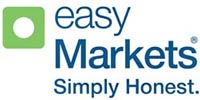
|
SpreadEx

|
FXPro

|
Admiral

|
|---|---|---|---|---|---|---|---|---|---|---|---|
| Rating | |||||||||||
| Regulation | International Capital Markets Pty Ltd (Australia) (ASIC) Australian Securities & Investments Commission Licence No. 335692, Seychelles Financial Services Authority (FSA) (SD018), IC Markets (EU) Ltd (CySEC) Cyprus Securities and Exchange Commission with License No. 362/18, Capital Markets Authority(CMA) Kenya IC Markets (KE) Ltd, Securities Commission of The Bahamas (SCB) IC Markets (Bahamas) Ltd | RoboForex Ltd is authorised and regulated by the Financial Services Commission (FSC) of Belize under licence No. 000138/32, under the Securities Industry Act 2021, RoboForex Ltd is an (A category) member of The Financial Commission, also RoboForex Ltd is a participant of the Financial Commission Compensation Fund | FCA (Financial Conduct Authority) eToro (UK) Ltd (FCA reference 583263), eToro (Europe) Ltd CySEC (Cyprus Securities Exchange Commission), ASIC (Australian Securities and Investments Commission) eToro AUS Capital Limited ASIC license 491139, CySec (Cyprus Securities and Exchange Commission under the license 109/10), FSAS (Financial Services Authority Seychelles) eToro (Seychelles) Ltd license SD076, eToro (ME) Limited (ADGM) Abu Dhabi (UAE) number 220073, eToro (Europe) Ltd (AMF) Autorité des marchés financiers as a digital assets provider France | FCA (Financial Conduct Authority reference 522157) XTB Limited, CySEC (Cyprus Securities and Exchange Commission reference 169/12), DFSA (Dubai Financial Services Authority XTB MENA Limited licensed 8 July 2021), FSA (Financial Services Authority Seychelles license number SD148), FSCA (Financial Sector Conduct Authority XTB Africa (Pty) Ltd licensed 10 August 2021), KNF (Komisja Nadzoru Finansowego Polish Financial Supervision Authority) | Financial Sector Conduct Authority (FSCA) (49976) XM ZA (Pty) Ltd, Financial Services Commission (FSC) (000261/27) XM Global Limited, Cyprus Securities and Exchange Commission (CySEC) (license 120/10) Trading Point of Financial Instruments Ltd, Australian Securities and Investments Commission (ASIC) (number 443670) Trading Point of Financial Instruments Pty Ltd | Financial Conduct Authority (FCA), Australian Securities and Investments Commission (ASIC), Cyprus Securities and Exchange Commission (CySEC), Federal Financial Supervisory Authority (BaFin), Dubai Financial Services Authority (DFSA), Capital Markets Authority of Kenya (CMA), Pepperstone Markets Limited is incorporated in The Bahamas (number 177174 B), Licensed by the Securities Commission of The Bahamas (SCB) number SIA-F217 | Australian Securities and Investments Commission (ASIC) Ava Capital Markets Australia Pty Ltd (406684), South African Financial Sector Conduct Authority (FSCA) Ava Capital Markets Pty Ltd (45984), Financial Services Agency (Japan FSA) Ava Trade Japan K.K. (1662), Financial Futures Association of Japan (FFAJ) Ava Trade Japan K.K. (1574), Abu Dhabi Global Markets (ADGM) / Financial Regulatory Services Authority (FRSA) Ava Trade Middle East Ltd (190018), Central Bank of Ireland (C53877) AVA Trade EU Ltd, Polish Financial Supervision Authority (KNF) AVA Trade EU Ltd (branch authorisation), British Virgin Islands Financial Services Commission (BVI) Ava Trade Markets Ltd (SIBA/L/13/1049), Israel Securities Authority (ISA) ATrade Ltd (514666577) | Easy Forex Trading Ltd is regulated by CySEC (License Number 079/07). Easy Forex Trading Ltd is the only entity that onboards EU clients, easyMarkets Pty Ltd is regulated by ASIC (AFS License No. 246566), EF Worldwide Ltd in Seychelles is regulated by FSA (License Number SD056), EF Worldwide Ltd in the British Virgin Islands is regulated by FSC (License Number SIBA/L/20/1135) | FCA (Financial Conduct Authority) (190941), Gambling Commission (Great Britain) (8835), licence in Ireland as remote bookmaker for fixed odds betting licence number 1016176 | FCA (Financial Conduct Authority) (509956), CySEC (Cyprus Securities and Exchange Commission) (078/07), FSCA (Financial Sector Conduct Authority) (45052), SCB (Securities Commission of The Bahamas) (SIA-F184), FSA (Financial Services Authority of Seychelles) (SD120) | Financial Conduct Authority (FCA) (Licence No. 595450), Cyprus Securities and Exchange Commission (CySEC) (Licence No. 201/13), Financial Services Authority of Seychelles (FSA) (Licence No. SD073), Estonian Financial Supervision Authority (EFSA) (Licence No. 4.1-1/46) |
| Min Deposit | 200 | 10 | 50 | No minimum deposit | 5 | No minimum deposit | 100 | 25 | No minimum deposit | 100 | 1 |
| Funding |
|
|
|
|
|
|
|
|
|
|
|
| Used By | 200,000+ | 730,000+ | 40,000,000+ | 1,000,000+ | 10,000,000+ | 400,000+ | 400,000+ | 250,000+ | 60,000+ | 7,800,000+ | 30,000+ |
| Benefits |
|
|
|
|
|
|
|
|
|
|
|
| Accounts |
|
|
|
|
|
|
|
|
|
|
|
| Platforms | MT5, MT4, MetaTrader WebTrader, Mobile Apps, iOS (App Store), Android (Google Play), MetaTrader iPhone/iPad, MetaTrader Android Google Play, MetaTrader Mac, cTrader, cTrader Web, cTrader iPhone/iPad, cTrader iMac, cTrader Android Google Play, cTrader Automate, cTrader Copy Trading, TradingView, Virtual Private Server, Trading Servers, MT4 Advanced Trading Tools, IC Insights, Trading Central | MT4, MT5, R Mobile Trader, R StocksTrader, WebTrader, Mobile Apps, iOS (App Store), Android (Google Play), Windows | eToro Trading App, Mobile Apps, iOS (App Store), Android (Google Play), CopyTrading, Web | MT4, Mirror Trader, Web Trader, Tablet, Mobile Apps, iOS (App Store), Android (Google Play) | MT5, MT5 WebTrader, XM Apple App for iPhone, XM App for Android Google Play, Tablet: MT5 for iPad, MT5 for Android Google Play, XM App for iPad, XM App for iOS (App Store), Android (Google Play), Mobile Apps | MT4, MT5, cTrader,WebTrader, TradingView, Windows, Mobile Apps, iOS (App Store), Android (Google Play) | MT4, MT5, Web Trading, AvaTrade App, AvaOptions, Mac Trading, AvaSocial, Mobile Apps, iOS (App Store), Android (Google Play) | easyMarkets App, Mobile Apps, iOS (App Store), Android (Google Play), Web Platform, TradingView, MT4, MT5 | Web, Mobile Apps, iOS (App Store), Android (Google Play), iPad App, iPhone App, TradingView | MT4, MT5, cTrader, FxPro WebTrader, FxPro Mobile Apps, iOS (App Store), Android (Google Play) | MT5, MT4, MetaTrader WebTrader, Admirals Mobile Apps, iOS (App Store), Android (Google Play), Admirals Platform, StereoTrader |
| Support |
|
|
|
|
|
|
|
|
|
|
|
| Learn More |
Sign
Up with icmarkets |
Sign
Up with roboforex |
Sign
Up with etoro |
Sign
Up with xtb |
Sign
Up with xm |
Sign
Up with pepperstone |
Sign
Up with avatrade |
Sign
Up with easymarkets |
Sign
Up with spreadex |
Sign
Up with fxpro |
Sign
Up with admiralmarkets |
| Risk Warning | Losses can exceed deposits | Losses can exceed deposits | 46% of retail investor accounts lose money when trading CFDs with this provider. | 69% - 80% of retail investor accounts lose money when trading CFDs with this provider. You should consider whether you understand how CFDs work and whether you can afford to take the high risk of losing your money. | CFDs are complex instruments and come with a high risk of losing money rapidly due to leverage. 75.99% of retail investor accounts lose money when trading CFDs with this provider. You should consider whether you understand how CFDs work and whether you can afford to take the high risk of losing your money. | 72-95 % of retail investor accounts lose money when trading CFDs | 57% of retail investor accounts lose money when trading CFDs with this provider | Your capital is at risk | 62% of retail CFD accounts lose money | 74% of retail investor accounts lose money when trading CFDs and Spread Betting with this provider | Losses can exceed deposits |
| Demo |
IC Markets Demo |
Roboforex Demo |
eToro Demo |
XTB Demo |
XM Demo |
Pepperstone Demo |
AvaTrade Demo |
easyMarkets Demo |
SpreadEx Demo |
FxPro Demo |
Admiral Markets Demo |
| Excluded Countries | US, IR, CA, NZ, JP | AU, BE, BQ, BR, CA, CW, CZ, DE, ES, EE, EU, FM, FR, FI, GW, ID, IR, JP, LR, MP, NL, PF, PL, RU, SE, SJ, SS, SL, SI, TL, TR, DO, US, IT, AT, PT, BG, HR, CY, DK, FL, GR, IE, LV, LT, MT, RO, SK, CH | ZA, ID, IR, KP, BE, CA, JP, SY, TR, IL, BY, AL, MD, MK, RS, GN, CD, SD, SA, ZW, ET, GH, TZ, LY, UG, ZM, BW, RW, TN, SO, NA, TG, SL, LR, GM, DJ, CI, PK, BN, TW, WS, NP, SG, VI, TM, TJ, UZ, LK, TT, HT, MM, BT, MH, MV, MG, MK, KZ, GD, FJ, PT, BB, BM, BS, AG, AI, AW, AX, LB, SV, PY, HN, GT, PR, NI, VG, AN, CN, BZ, DZ, MY, KH, PH, VN, EG, MN, MO, UA, JO, KR, AO, BR, HR, GL, IS, IM, JM, FM, MC, NG, SI, | US, IN, PK, BD, NG , ID, BE, AU | US, CA, IL, IR | AF, AS, AQ, AM, AZ, BY, BE, BZ, BT, BA, BI, CM, CA, CF, TD, CG, CI, ER, GF, PF, GP, GU, GN, GW, GY, HT, VA, IR, IQ, JP, KZ, LB, LR, LY, ML, MQ, YT, MZ, MM, NZ, NI, KP, PS, PR, RE, KN, LC, VC, WS, SO, GS, KR, SS, SD, SR, SY, TJ, TN, TM, TC, US, VU, VG, EH, ES, YE, ZW, ET | BE, BR, KP, NZ, TR, US, CA, SG | US, IL, BC, MB, QC, ON, AF, BY, BI, KH, KY, TD, KM, CG, CU, CD, GQ, ER, FJ, GN, GW, HT, IR, IQ, LA, LY, MZ, MM, NI, KP, PW, PA, RU, SO, SS, SD, SY, TT, TM, VU, VE, YE | US, TR | US, CA, IR | US, CA, JP, SG, MY, JM, IR, TR |
All Trading nikkei 225 index brokers in more detail
You can compare Trading Nikkei 225 Index Brokers ratings, min deposits what the the broker offers, funding methods, platforms, spread types, customer support options, regulation and account types side by side.
We also have an indepth Top Trading Nikkei 225 Index Brokers for 2026 article further below. You can see it now by clicking here
We have listed top Trading nikkei 225 index brokers below.
Trading Nikkei 225 Index Brokers List

Funding methods
Bank transfer Credit Card PaypalPlatforms
MT5, MT4, MetaTrader WebTrader, Mobile Apps, iOS (App Store), Android (Google Play), MetaTrader iPhone/iPad, MetaTrader Android Google Play, MetaTrader Mac, cTrader, cTrader Web, cTrader iPhone/iPad, cTrader iMac, cTrader Android Google Play, cTrader Automate, cTrader Copy Trading, TradingView, Virtual Private Server, Trading Servers, MT4 Advanced Trading Tools, IC Insights, Trading CentralCustomer support
Live chat Phone support Email supportAccount Types
Micro account Standard account ECN accountIslamic account VIP account

Funding methods
Bank transfer Credit Card PaypalPlatforms
MT4, MT5, R Mobile Trader, R StocksTrader, WebTrader, Mobile Apps, iOS (App Store), Android (Google Play), WindowsCustomer support
Live chat Phone support Email supportAccount Types
Micro account Standard account ECN accountIslamic account VIP account

eToro is a multi-asset platform which offers both investing in stocks and cryptoassets, as well as trading CFDs.
Please note that CFDs are complex instruments and come with a high risk of losing money rapidly due to leverage. 46% of retail investor accounts lose money when trading CFDs with this provider. You should consider whether you understand how CFDs work, and whether you can afford to take the high risk of losing your money.
This communication is intended for information and educational purposes only and should not be considered investment advice or investment recommendation. Past performance is not an indication of future results.
Copy Trading does not amount to investment advice. The value of your investments may go up or down. Your capital is at risk.
Crypto investments are risky and may not suit retail investors; you could lose your entire investment. Understand the risks here.
Don't invest unless you're prepared to lose all the money you invest. This is a high-risk investment, and you should not expect to be protected if something goes wrong. Take 2 mins to learn more.
eToro USA LLC does not offer CFDs and makes no representation and assumes no liability as to the accuracy or completeness of the content of this publication, which has been prepared by our partner utilizing publicly available non-entity specific information about eToro.
Funding methods
Bank transfer Credit Card PaypalPlatforms
eToro Trading App, Mobile Apps, iOS (App Store), Android (Google Play), CopyTrading, WebCustomer support
Live chat Phone support Email supportAccount Types
Micro account Standard account ECN accountIslamic account VIP account

Funding methods
Bank transfer Credit Card PaypalPlatforms
MT4, Mirror Trader, Web Trader, Tablet, Mobile Apps, iOS (App Store), Android (Google Play)Customer support
Live chat Phone support Email supportAccount Types
Micro account Standard account ECN accountIslamic account VIP account

Funding methods
Bank transfer Credit Card PaypalPlatforms
MT5, MT5 WebTrader, XM Apple App for iPhone, XM App for Android Google Play, Tablet: MT5 for iPad, MT5 for Android Google Play, XM App for iPad, XM App for iOS (App Store), Android (Google Play), Mobile AppsCustomer support
Live chat Phone support Email supportAccount Types
Micro account Standard account ECN accountIslamic account XM Swap-Free account (XM Ultra Low Account) VIP account

Funding methods
Bank transfer Credit Card PaypalPlatforms
MT4, MT5, cTrader,WebTrader, TradingView, Windows, Mobile Apps, iOS (App Store), Android (Google Play)Customer support
Live chat Phone support Email supportAccount Types
Micro account Standard account ECN accountIslamic account Pro Account VIP account

Funding methods
Bank transfer Credit Card PaypalPlatforms
MT4, MT5, Web Trading, AvaTrade App, AvaOptions, Mac Trading, AvaSocial, Mobile Apps, iOS (App Store), Android (Google Play)Customer support
Live chat Phone support Email supportAccount Types
Micro account Standard account ECN accountIslamic account VIP account

Funding methods
Bank transfer Credit Card PaypalPlatforms
easyMarkets App, Mobile Apps, iOS (App Store), Android (Google Play), Web Platform, TradingView, MT4, MT5Customer support
Live chat Phone support Email supportAccount Types
Micro account Standard account ECN accountIslamic account VIP account

Funding methods
Bank transfer Credit Card PaypalPlatforms
Web, Mobile Apps, iOS (App Store), Android (Google Play), iPad App, iPhone App, TradingViewCustomer support
Live chat Phone support Email supportAccount Types
Micro account Standard account ECN accountIslamic account VIP account

Funding methods
Bank transfer Credit Card PaypalPlatforms
MT4, MT5, cTrader, FxPro WebTrader, FxPro Mobile Apps, iOS (App Store), Android (Google Play)Customer support
Live chat Phone support Email supportAccount Types
Micro account Standard account ECN accountIslamic account VIP account

Funding methods
Bank transfer Credit Card PaypalPlatforms
MT5, MT4, MetaTrader WebTrader, Admirals Mobile Apps, iOS (App Store), Android (Google Play), Admirals Platform, StereoTraderCustomer support
Live chat Phone support Email supportAccount Types
Micro account Standard account ECN accountIslamic account VIP account
Learn more
 Losses can exceed deposits
Losses can exceed deposits
Losses can exceed deposits